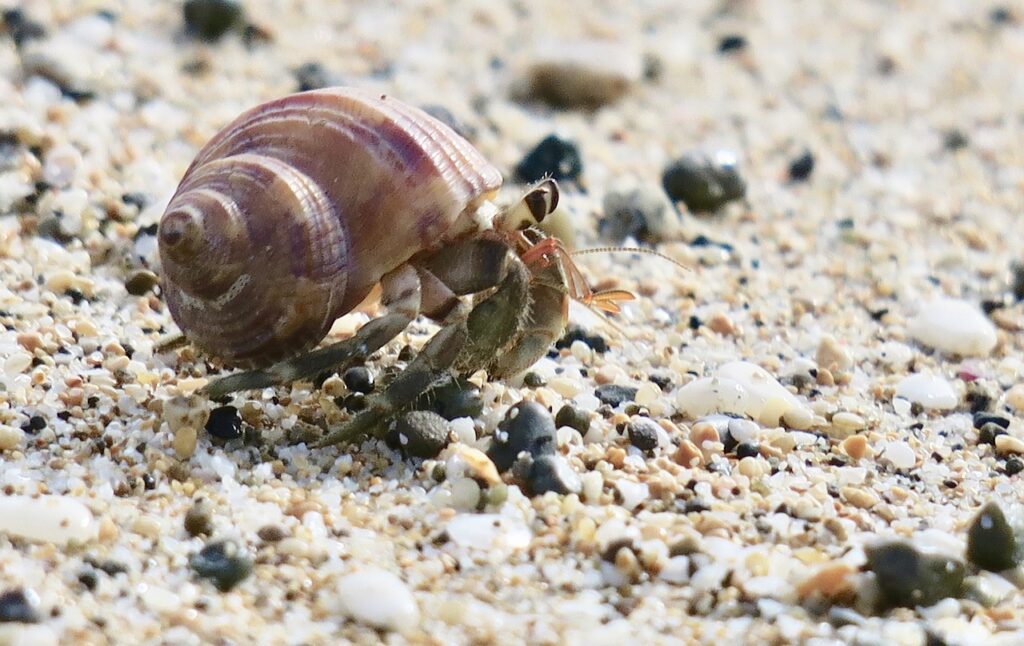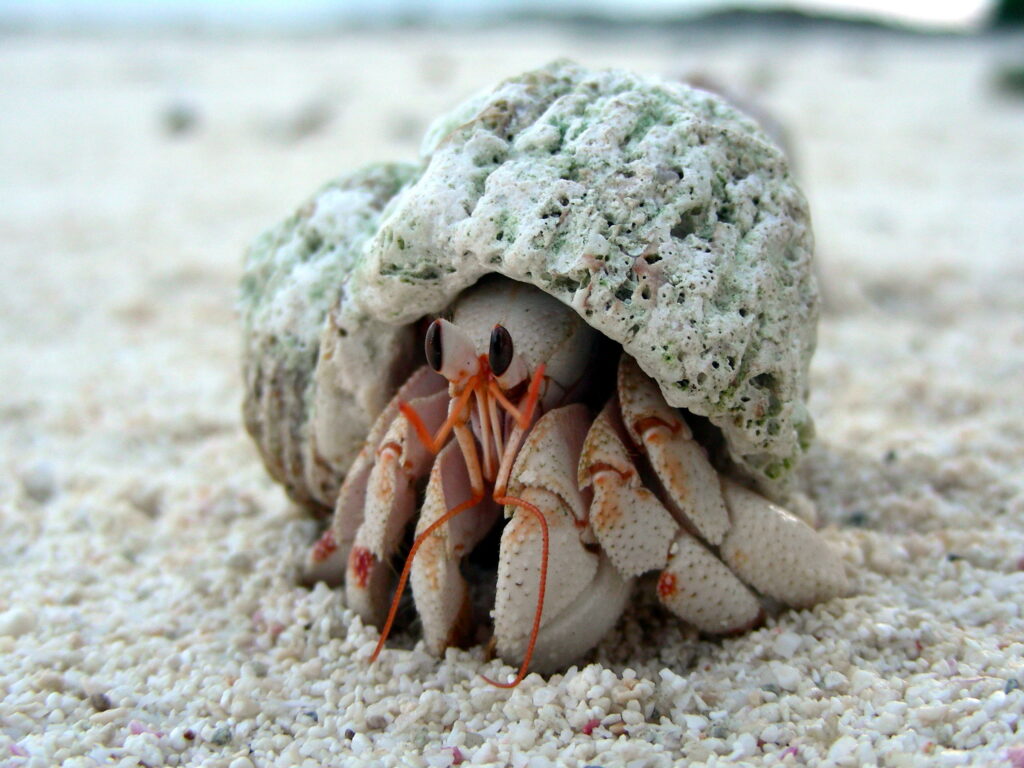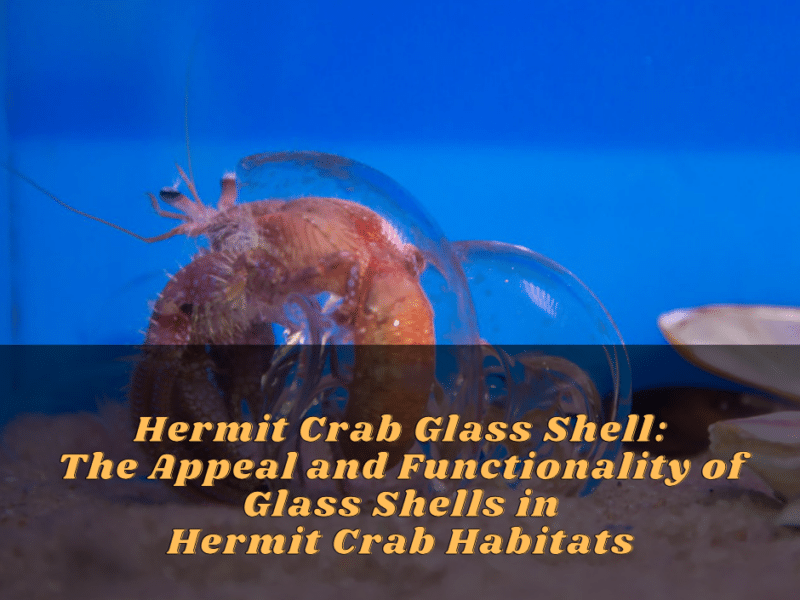Introduction
Are Hermit Crabs Nocturnal: Exploring the Nighttime Habits of Hermit Crabs
Hermit crabs are fascinating creatures known for their unique ability to use discarded shells as protective homes. While many people are familiar with their daytime behaviors, such as scavenging for food and exploring their environment, there is a curiosity about their nighttime habits. Are hermit crabs nocturnal or diurnal? In this article, we will delve into the sleeping and activity patterns of hermit crabs to shed light on this intriguing question.
Overview: Are Hermit Crabs Nocturnal Or Diurnal?
To determine whether hermit crabs are nocturnal or diurnal, it is essential to understand the difference between these two terms. Nocturnal animals are primarily active during the night, while diurnal animals are active during the day. While hermit crabs do not fall into either category exclusively, they can exhibit behaviors associated with both.
Understanding The Sleep Behavior Of Hermit Crabs
Hermit crabs do not experience traditional sleep like humans do. Instead, they have intermittent resting periods throughout the day and night. These resting periods can vary in length and frequency depending on factors such as environmental conditions and the availability of food.
During the day, hermit crabs can be seen exploring their surroundings, foraging for food, and interacting with other crabs. They are generally more active during this time as they take advantage of the ample light and warmth provided by the sun. However, this does not mean that they are solely diurnal creatures.
As the sun sets and darkness falls, hermit crabs may become more active, displaying behaviors commonly associated with nocturnal animals. They may venture out of their shells to scavenge for food and engage in social interactions. This nighttime activity can be influenced by factors such as the availability of food sources, predators, and the natural rhythms of their specific habitat.
It is important to note that hermit crabs are highly adaptable creatures. They can adjust their activity patterns to suit their needs and the conditions of their environment. For example, in captivity, where artificial lighting is used, hermit crabs may exhibit different activity patterns compared to their counterparts in the wild.
While hermit crabs may not adhere strictly to a nocturnal or diurnal schedule, it is safe to say that they have a degree of flexibility in their behavior. They can adapt and thrive in a variety of conditions, allowing them to take advantage of food sources and minimize the risk of predation.
In conclusion, hermit crabs exhibit behaviors associated with both nocturnal and diurnal animals. They have periods of activity during the day and night, with their behavior influenced by factors such as food availability, environmental conditions, and natural rhythms. Understanding the sleeping and activity patterns of hermit crabs adds to our appreciation of these fascinating creatures and their ability to adapt to different environments.
Nocturnal Behavior Of Hermit Crabs
Feeding Patterns And Foraging At Night
While hermit crabs may not strictly adhere to a nocturnal schedule, they do exhibit behaviors associated with nighttime activity. One of these behaviors is their feeding patterns and foraging habits at night. During the dark hours, hermit crabs often become more active and venture out of their shells in search of food.
In their natural habitat, hermit crabs have a diverse diet that includes scavenging on decaying plant matter, small insects, and other organic materials. They use their pincers to pick up and manipulate food items, carrying them back to their shells for consumption. At night, when competition for food may be lower, hermit crabs seize the opportunity to explore their surroundings and find sustenance.
The darkness provides a sense of safety and protection for hermit crabs as they scavenge for food. They use their keen sense of smell and touch to locate potential food sources. Their nocturnal activities not only allow them to satisfy their hunger but also serve as a means to maintain their energy levels and overall health.
Exploring And Active Behavior In Darkness
In addition to their feeding patterns, hermit crabs also display active behavior during the nighttime hours. The absence of predators and the reduced activity of other species create an environment that allows hermit crabs to explore and move more freely.
During the night, hermit crabs may engage in various social interactions with other crabs. This includes shell swapping, which is a behavior where two crabs exchange shells to find a more suitable and comfortable home. These interactions can be quite fascinating to observe as hermit crabs navigate their surroundings and communicate through a combination of touch and body language.
Furthermore, the darkness provides hermit crabs with the opportunity to navigate their environment more discreetly. They can move around without drawing too much attention, allowing them to search for food, find suitable shells, and establish their territories without as much competition or interference.
It is important to note that individual hermit crabs may display different activity patterns based on their specific habitat and environmental conditions. Factors such as food availability, temperature, and the presence of predators can influence their behavior. This adaptability allows hermit crabs to maximize their chances of survival and thrive in various ecosystems.
In captivity, where artificial lighting is typically used, hermit crabs may exhibit altered activity patterns compared to their wild counterparts. The introduction of artificial light can disrupt their natural circadian rhythms, leading to changes in their behavior and activity levels.
In conclusion, hermit crabs exhibit behaviors associated with nighttime activity. Their feeding patterns and foraging habits at night allow them to find food and maintain their energy levels. They also display active behavior during the dark hours, exploring their surroundings and engaging in social interactions. While their activity patterns may vary based on environmental conditions, hermit crabs demonstrate adaptability and the ability to thrive in different ecosystems. Understanding their nocturnal behaviors enhances our appreciation for these fascinating creatures and their unique adaptations.
Daytime Activities Of Hermit Crabs
While hermit crabs are often associated with nocturnal behavior, it is important to note that their activities during the daytime are equally significant. During the day, hermit crabs engage in various behaviors that contribute to their overall well-being and survival. This section will explore the daytime activities of hermit crabs, including resting and sheltering, as well as occasional daytime explorations and activities.
Resting And Sheltering During The Day
During the day, hermit crabs often seek shelter in their shells or find hidden spots within their environment to rest and protect themselves from predators. This period of rest is crucial for their physical and mental health, allowing them to conserve energy and recharge for their nighttime activities. Resting provides them with the opportunity to regenerate their exoskeletons, molt, and repair any injuries they may have sustained.
Hermit crabs are known for their shells, which serve as portable homes. These shells not only provide protection and shelter but also enable them to carry their homes with them as they grow. During the day, hermit crabs retreat into their shells, aligning their bodies inside to ensure a snug fit. This sheltering behavior helps them maintain their body temperature and moisture levels, creating a favorable microclimate within their shells.
In addition to their shells, hermit crabs may also seek out natural shelters such as rocky crevices, leaf litter, or burrows in the sand. These hiding places offer additional protection from predators and harsh weather conditions. Hermit crabs are resourceful creatures, utilizing their environment to create safe havens for themselves during the day.
Occasional Daytime Explorations And Activities
While hermit crabs are primarily active at night, they do occasionally venture out during the daytime for various reasons. These daytime explorations are often driven by the need to find food, seek new shells, or interact with other hermit crabs.
One common daytime activity for hermit crabs is foraging. Despite their preference for nighttime feeding, hermit crabs may take advantage of food sources that are more abundant during the day, such as fresh plant matter or fallen fruits. They use their sensitive antennae to detect potential food sources and their pincers to manipulate and carry food back to their shelter or shells.
Another reason for daytime exploration is the search for suitable shells. As hermit crabs grow, they outgrow their current shells and need to find larger ones to accommodate their increasing size. This process, known as shell swapping, may occur both during the day and at night. Hermit crabs actively explore their surroundings, inspecting shells they come across and determining if they are a better fit than their current homes. Shell swapping is crucial for their well-being, as a proper-fitting shell provides protection and allows for proper growth.
During their occasional daytime activities, hermit crabs may also interact with other hermit crabs. These interactions involve a combination of touch and body language, allowing them to communicate and establish dominance hierarchies. Social interactions can occur during both daytime and nighttime hours, as hermit crabs navigate their environment and compete for resources, including shells and food.
It is important to note that the specific daytime activities of hermit crabs may vary depending on their habitat and environmental conditions. Factors such as temperature, food availability, and the presence of predators can influence their behavior and activity patterns. Hermit crabs demonstrate adaptability and flexibility in their daily routines, optimizing their chances of survival in diverse ecosystems.
In conclusion, hermit crabs are not strictly nocturnal creatures, but rather exhibit a combination of daytime and nighttime activities. While resting and sheltering during the day, they ensure their physical well-being and conserve energy for their nighttime endeavors. Additionally, occasional daytime explorations allow for foraging, shell swapping, and social interactions. Understanding the daytime activities of hermit crabs deepens our knowledge of these fascinating creatures and their ability to adapt to different environments. Whether it is finding shelter, searching for food, or engaging with other hermit crabs, their behavior highlights their resourcefulness and resilience in various ecosystems.
Factors Affecting Nocturnal And Diurnal Habits
Natural Behavior In The Wild
Hermit crabs, known for their unique lifestyle, exhibit a combination of both nocturnal and diurnal behaviors. In the wild, hermit crabs are primarily active during the night and tend to retreat to their shelters during the day. This behavior is influenced by various factors, including predator avoidance, availability of food sources, and the need for moisture.
One of the main reasons for their nocturnal behavior is predator avoidance. The cover of darkness provides hermit crabs with a level of protection from predators that are more active during the day. By coming out at night, hermit crabs reduce the risk of being preyed upon and increase their chances of survival.
Additionally, the availability of food sources also plays a role in their nocturnal habits. Many of the hermit crabs’ preferred food sources, such as algae, plankton, and decaying plant matter, are more abundant during the night. By being active during these hours, hermit crabs can take advantage of these food sources and meet their nutritional needs.
Furthermore, hermit crabs have a strong reliance on moisture to keep their gills moist and prevent dehydration. In some habitats, the daytime temperatures can be harsh and dry, making it challenging for them to retain moisture. By being active during the cooler and more humid nighttime hours, hermit crabs can minimize water loss and maintain optimal conditions for their survival.
Adaptation To Captivity And Environmental Factors
In captivity, hermit crabs have the potential to adapt their activity patterns based on the environmental conditions provided. Factors such as lighting, temperature, and the availability of food and water sources can influence their behavior and shift their nocturnal or diurnal tendencies.
Lighting plays a significant role in regulating the circadian rhythm of hermit crabs. In captivity, providing a consistent light-dark cycle mimicking their natural habitat can help maintain their nocturnal tendencies. By ensuring a period of darkness during the day, hermit crabs are more likely to exhibit their natural behavior and be active during the night.
Temperature also affects the activity patterns of hermit crabs. In captivity, maintaining a suitable temperature range within their enclosure can help replicate their natural habitat and encourage desired behaviors. If the temperature is too high or too low, it may disrupt their circadian rhythm and result in altered activity patterns.
The availability of food and water sources within the enclosure can also influence the activity patterns of hermit crabs. If food and water are readily accessible during the day, hermit crabs may be more inclined to be active during these hours. Providing a varied diet that includes both daytime and nighttime feeding options can help cater to their natural feeding preferences.
It is important to note that while hermit crabs can adapt their activity patterns in captivity, it is crucial to respect their natural tendencies and provide an environment that supports their overall well-being. This includes providing suitable hiding spots and shells for shelter, maintaining proper humidity levels, and ensuring a balanced diet to meet their nutritional needs.
In conclusion, hermit crabs exhibit a combination of nocturnal and diurnal behaviors in the wild, primarily driven by predator avoidance, availability of food sources, and the need for moisture. While their natural behavior tends to be nocturnal, hermit crabs can adapt their activity patterns in captivity based on environmental factors such as lighting, temperature, and the availability of food and water sources. Understanding these factors and providing a suitable environment that respects their natural tendencies is essential for ensuring the well-being and happiness of hermit crabs in captivity.
Conclusion
In conclusion, hermit crabs are primarily nocturnal creatures in their natural habitat. Their nighttime behavior is influenced by various factors such as predator avoidance, availability of food sources, and the need for moisture. By being active during the night, hermit crabs reduce the risk of predation, take advantage of abundant nighttime food sources, and maintain optimal conditions for their survival.
However, in captivity, hermit crabs have the potential to adapt their activity patterns based on environmental conditions. Factors like lighting, temperature, and the availability of food and water sources can influence their behavior and shift their nocturnal tendencies. Mimicking their natural habitat by providing a consistent light-dark cycle, maintaining suitable temperatures, and offering a varied diet can help replicate their natural tendencies.
It is important to note that while hermit crabs can adapt their activity patterns in captivity, respecting their natural tendencies is crucial for their overall well-being. Providing suitable hiding spots, shells for shelter, and maintaining proper humidity levels are essential for their happiness. Understanding and observing the nocturnal habits of hermit crabs can be a fascinating experience.
Recap Of Hermit Crabs’ Nocturnal Tendencies
Hermit crabs exhibit a combination of both nocturnal and diurnal behaviors in the wild. They are primarily active during the night and tend to retreat to their shelters during the day. This behavior is driven by factors such as predator avoidance, availability of food sources, and the need for moisture.
During the night, hermit crabs can take advantage of abundant food sources like algae, plankton, and decaying plant matter, which are more prevalent during those hours. The cover of darkness also provides protection from predators that are more active during the day. Additionally, being active at night allows hermit crabs to minimize water loss and maintain optimal conditions for their survival.
The Fascination Of Observing Hermit Crabs’ Nighttime Habits
Observing the nighttime habits of hermit crabs can be a fascinating experience for nature enthusiasts and pet owners alike. During the night, hermit crabs become more active, exploring their surroundings, searching for food, and interacting with their environment.
Their unique behaviors, such as scavenging for edible materials, climbing, and changing shells, can be observed during the night. The darkness provides an opportunity to witness their natural instincts and behaviors that are not as apparent during the day.
Watching hermit crabs navigate their enclosures, interact with other crabs, and display their natural curiosity can be an exciting and educational experience. It allows us to appreciate the intricacies of their behavior and gain a deeper understanding of their natural tendencies.
Furthermore, observing hermit crabs at night can also be a calming and peaceful experience. The quietness and stillness of the nighttime environment create a serene atmosphere that enhances the connection with nature. It offers a tranquil setting for observing the unique behaviors and movements of these fascinating creatures.
In conclusion, exploring the nighttime habits of hermit crabs provides a deeper insight into their natural tendencies and behaviors. Whether in the wild or captivity, understanding their nocturnal tendencies and providing an environment that respects their needs is essential for their well-being. Observing their nocturnal activities can be an enriching and rewarding experience for anyone interested in these intriguing creatures.
FAQ: Are Hermit Crabs Nocturnal? Exploring the Nighttime Habits of Hermit Crabs
Q: Are hermit crabs nocturnal or diurnal?
A: Hermit crabs are mostly nocturnal, meaning they are more active during the night.
Q: What do hermit crabs do at night?
A: At night, hermit crabs love to explore their surroundings. They climb up and down trees, burrow, tunnel, and even venture out to the ocean shoreline and back.
Q: Why are hermit crabs active at night?
A: Hermit crabs are most active at night because it provides them with protection from potential predators. They feel safer exploring and feeding under the cover of darkness.
Q: Do hermit crabs sleep during the night?
A: Yes, hermit crabs do sleep during the night. They sleep for approximately six to eight hours daily.
Q: What happens if I don’t see my hermit crabs in the morning?
A: If you don’t see your hermit crabs in the morning, there’s no need to worry. They might be hiding or burrowing, as they are known to explore all kinds of spaces. They will likely come out when they’re ready, which is typically during the night.
Q: Should I dig or move things around if I can’t find my hermit crabs?
A: No, it’s best not to dig or move things around if you can’t find your hermit crabs. It’s likely that they are simply hiding or burrowing. They have a natural instinct to seek shelter and may have found a hidden spot.
Q: Can hermit crabs change their shells at night?
A: Yes, hermit crabs have the ability to leave their shells and even swap them for better ones if they outgrow or damage their current shell. This behavior can happen during the day or night.
Q: Do hermit crabs prefer dark spaces?
A: Yes, most hermit crabs are nocturnal animals and prefer dark spaces over well-lit areas. They feel more comfortable and secure in dimly lit environments.
Q: How can I create a suitable nighttime habitat for my hermit crabs?
A: To create a suitable nighttime habitat for your hermit crabs, provide plenty of hiding spots such as caves, tunnels, and overturned shells. Use low-intensity lighting or a red light bulb to mimic natural darkness. Ensure the temperature and humidity levels are appropriate for their species.
In conclusion, hermit crabs are fascinating creatures with nocturnal behavior. They actively explore, feed, burrow, and sleep during the night. It’s important to provide them with suitable hiding spots and a dark environment to mimic their natural habitat.





